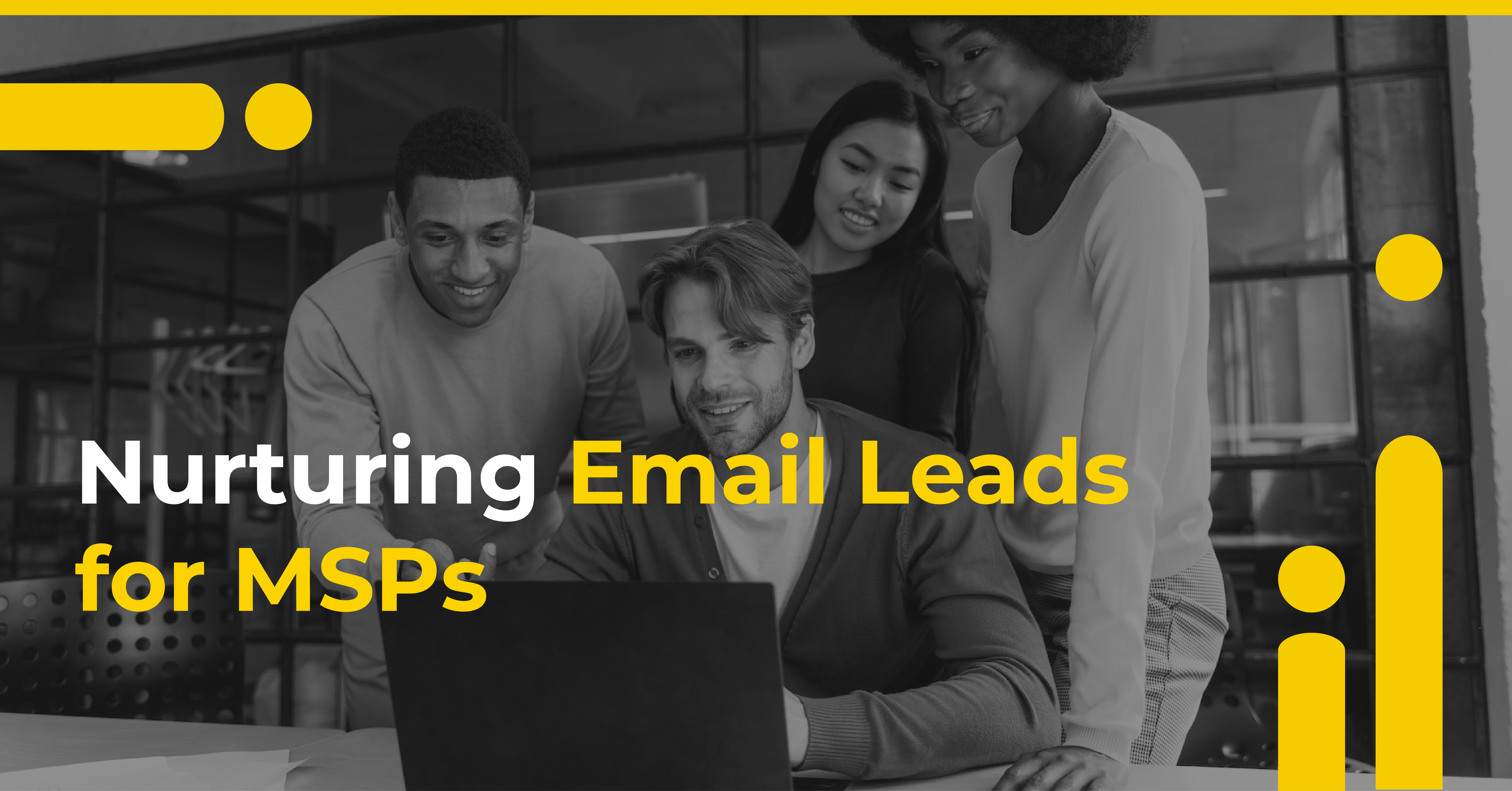With your customer’s inboxes inundated daily, capturing attention and building meaningful connections demands a more sophisticated approach. With the right approach, your email campaigns can become a powerful asset in your lead-nurturing efforts, driving growth and success for your business.
Understanding how to nurture email leads is crucial for MSP owners who want to stand out, increase engagement, and convert leads into loyal clients. In this blog post, we'll break down key tactics that will elevate your email marketing game, helping you connect with your audience more personally and effectively.
The Power of Personalization in Emails
Personalization is a potent tool in email marketing. By tailoring messages to individual recipients, MSPs can create a deeper, more authentic connection with their audience. Imagine receiving an email that addresses you by name rather than a generic "Hello, Customer." It feels better, right?
But personalization goes beyond just using a person's name. It involves understanding their preferences, behaviors, and previous interactions to deliver content that truly resonates. For instance, if a lead has shown interest in cybersecurity services, sending them updates on the latest security trends or offering tailored solutions can significantly increase engagement.
Statistics support this approach. According to a study by Experian, personalized emails deliver six times higher transaction rates. For MSPs, this means more leads are nurtured into clients, and there is a better return on your marketing efforts. By leveraging data and insights, you can craft messages that speak directly to your audience's needs, making them feel valued and understood.
Leveraging Automation for Efficient Email Marketing
Automation is the backbone of efficient email marketing, especially for MSPs looking to scale their efforts without sacrificing quality. Imagine setting up an automated email sequence that targets a lead at different stages of their buyer's journey while focusing on other aspects of your business.
Email automation tools allow you to send the right message at the right time. For example, when a lead signs up for your newsletter, automation can trigger a welcome email, followed by a series of educational content tailored to their interests. This keeps your brand top-of-mind and effortlessly guides the lead through the sales funnel.
The beauty of automation is that it enables personalization on a larger scale. You can segment your audience based on various criteria, such as industry, location, or behavior, and automatically deliver relevant content to each group. This ensures that every email feels like it was crafted just for them, enhancing engagement and increasing the likelihood of conversion.
The Importance of Follow-Up Emails
Customers face a constant onslaught of emails that they can hardly keep up with. Sending follow-up emails is a great way to ensure that your customers have multiple opportunities to see your messaging. This is where follow-up emails come into play as a crucial tactic for MSPs. A single email rarely seals the deal, but a well-timed follow-up can reignite interest and push leads further down the sales funnel.
Consider this scenario: a lead downloads a white paper on cloud solutions but doesn't engage further. A follow-up email thanking them for their interest and offering additional resources or consultation can remind them of your value proposition. It's an opportunity to re-establish contact and provide more information that might just be the deciding factor.
Research shows that follow-up emails can increase response rates by over 20%. For MSPs, this means more opportunities to connect with potential clients and demonstrate your expertise. Don't be afraid to send a follow-up; often, it's the gentle nudge needed to move a lead closer to a decision.
Mapping Content to the Buyer’s Journey
Understanding and mapping content to the buyer's journey is a strategic move that can dramatically improve your email marketing results. Leads go through different stages before making a purchase decision, and your content should align with each phase to nurture them effectively.
In the awareness stage, prospects are just realizing their pain points. Educational content, such as blog posts or informative guides, can be invaluable here. As they move into the consideration stage, they're evaluating solutions. At this point, case studies, testimonials, and detailed product information can help position your MSP as the ideal choice.
Finally, in the decision stage, leads are ready to make a purchase. Offering free trials, demos, or consultations can tip the scales in your favor. By delivering the right content at the right time, you can guide leads seamlessly through their decision-making process, ultimately increasing your conversion rates.


